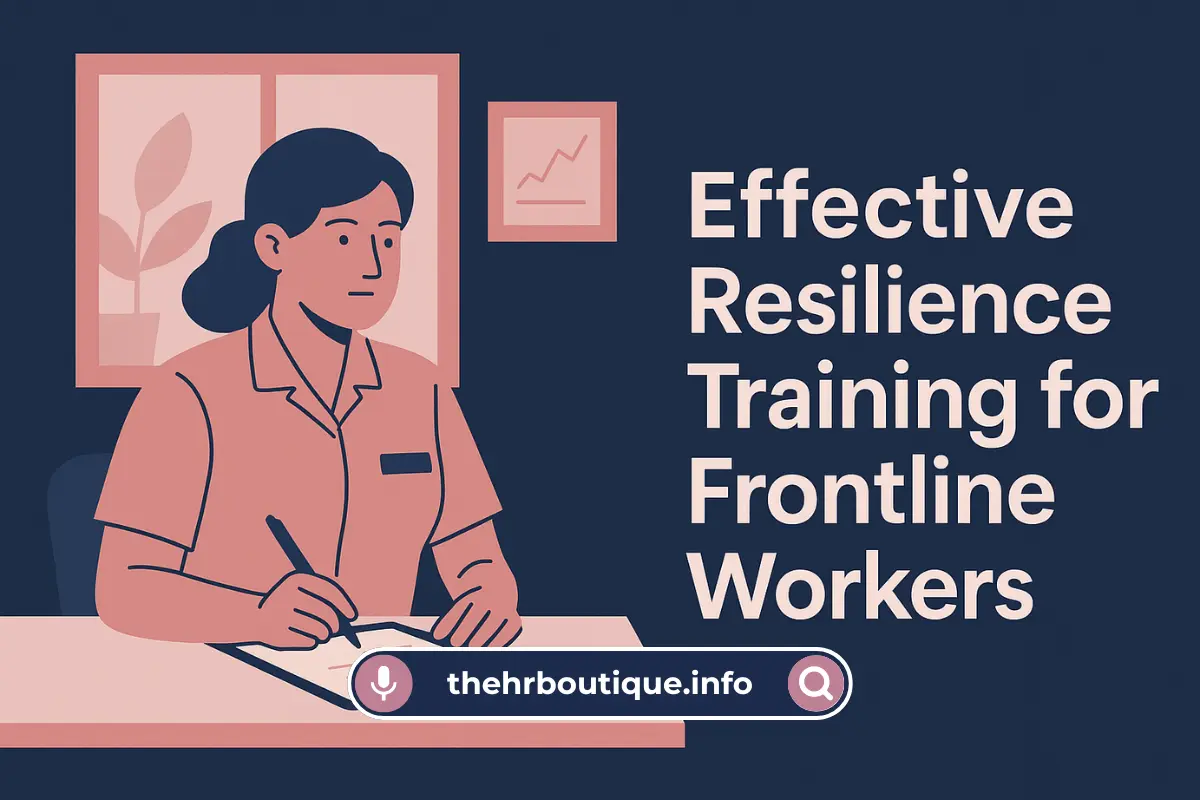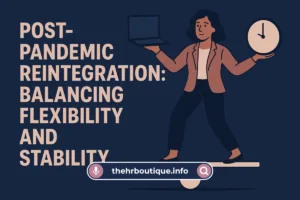Let me tell you about Maria, an ER nurse I worked with last year. After 18 brutal months of pandemic surges, she was running on fumes – snapping at colleagues, calling in sick twice a month, and seriously considering leaving the profession she loved. Then her hospital rolled out a radically different kind of resilience program. Not the usual corporate fluff, but something that actually changed lives.
That’s what we’re going to unpack today – how to build resilience training that doesn’t just check boxes but transforms how your frontline teams weather storms. I’ve designed these programs across hospitals, call centers, and retail chains, and here’s what actually moves the needle.
Why Generic Resilience Training Falls Flat?
We’ve all suffered through those cringeworthy trainings where some consultant shows stock photos of mountain climbers while spouting platitudes about “mindset shifts.” Frontline workers – the people actually dealing with life-and-death decisions, irate customers, and daily chaos – see right through that nonsense.
Real resilience training needs to:
- Acknowledge the specific hell your teams face daily.
- Provide tools they can use mid-crisis (not just during quiet meditation breaks they’ll never get).
- Address the organizational factors burning people out (not just blaming individuals for not “being tough enough”).
The Nuts and Bolts of Training That Actually Works
1. Start With Their Reality – Not Theory
Last month, I watched a resilience trainer tell 911 dispatchers to “practice gratitude journaling” after taking calls about overdoses and domestic violence. The eye rolls could’ve powered a small city.
Instead, we:
- Mapped out their most frequent crisis scenarios.
- Identified the exact moments where stress derailed performance.
- Built muscle memory for those make-or-break seconds.
For dispatchers, we created 90-second “reset drills” they could use between traumatic calls – physical actions (not just breathing) to shock their nervous systems back to baseline.
2. Train the Body First, Mind Second
Here’s an uncomfortable truth: When someone’s screaming in your face or you’re holding a bleeding patient, your prefrontal cortex checks out. All those mindfulness techniques? Useless in the moment.
We focus on:
- Physiological hacks like tactical breathing (used by special forces).
- Posture anchors (how standing in certain ways changes stress chemistry).
- Emergency resets (a barista taught me the “lemon squeeze” – clenching and releasing fists 5x to short-circuit panic).
3. Build Collective Resilience
Individual resilience has limits. The most effective programs create team-based survival strategies:
- Battle buddy systems (not HR-mandated, but organic partnerships).
- After-action “decompress” rituals (ER nurses doing 5-minute debriefs in the parking lot).
- Peer-led skill shares (veteran employees teaching newbies their coping tricks).
At a Midwest grocery chain, cashiers developed “code words” to signal when they needed backup from stressful interactions. Management didn’t mandate it – the teams organically created what they needed.
The Dirty Secret Most Trainers Won’t Tell You
No amount of resilience training fixes toxic workplaces. If you’re:
- Chronically understaffing.
- Ignoring abusive customers.
- Punishing people for taking mental health days.
…then you’re just teaching people to endure abuse. The best programs include:
- Upward feedback channels where frontline workers shape policies.
- Manager’s accountability for creating humane working conditions.
- “Stress audits” to eliminate preventable burnout triggers.
How to Know It’s Working? (Real Metrics That Matter)
Forget smiley-face feedback forms. Look for:
- Reduced “code greens” (those mysterious “I need to suddenly go home” sick calls).
- Fewer escalation requests (employees handling more situations independently).
- Increased tenure in historically high-turnover roles.
- Peer-to-peer mentoring is emerging organically.
At Maria’s hospital, within 6 months, they saw:
- 38% reduction in med errors during high-stress shifts.
- Nurses voluntarily extending contracts they’d planned to quit.
- A viral TikTok trend of night shift nurses doing “resilience dance breaks”.
Your First 3 Moves (Starting Tomorrow)
- Shadow your frontline – Spend real time in their shoes. The training insights will slap you in the face.
- Pilot one physical reset tool – Start with tactical breathing or the “5-4-3-2-1” grounding technique.
- Create a “stress amnesty” hour – Weekly protected time where teams can vent and problem-solve without judgment.
Resilience isn’t about making people tougher – it’s about giving them the specific tools to stay human in inhuman conditions. And when you get it right? You don’t just retain employees – you create warriors who’ll move mountains for your organization.
Now go ask your frontline what they really need. (And be ready to hear some uncomfortable truths.)
Need help building a no-BS resilience program? Let’s grab coffee – I’ll show you what worked at [similar company to reader’s industry]. No canned presentations, just real talk.





